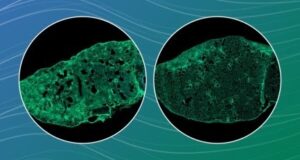
A new research paper was published in Oncotarget’s Volume 15 on October 11, 2024, entitled “Initiation of tumor dormancy by the lymphovascular embolus.”
Researchers Yin Ye, Justin Wang, Michael G. Izban, Billy R. Ballard, and Sanford H. Barsky from Meharry Medical College in Nashville, TN, and Scripps Mercy Hospital in San Diego, CA, uncovered critical mechanisms that lead to tumor dormancy in breast cancer. This study sheds light on how certain cancer cells can remain dormant for years before potentially reawakening as metastatic tumors.
Using breast cancer patient-derived organoids and tumor samples, the research team discovered that tumor dormancy in breast cancer can be triggered by specific signaling changes within small cell clusters, called tumor emboli, which detach from the primary tumor and travel through the bloodstream. These emboli can remain inactive, sometimes for years, before reawakening in other parts of the body. Key changes include reduced activity of mTOR, a metabolic regulator, and structural shifts in E-cadherin, a molecule involved in cell adhesion. This study also suggests these changes are regulated by the PI3K pathway and occur within the unique three-dimensional structure of tumor spheroids, shedding light on the interactions within dormant cell clusters.
As a conclusion, this work not only identifies mTOR and E-cadherin as key components in maintaining dormancy but also offers a promising roadmap for future therapies. By targeting these pathways, there may be potential to keep cancer cells in a dormant state, reducing the risk of late-stage recurrence and improving patient outcomes.
Source:
Journal reference:
Ye, Y., et al. (2024). Initiation of tumor dormancy by the lymphovascular embolus. Oncotarget. doi.org/10.18632/oncotarget.28658.




